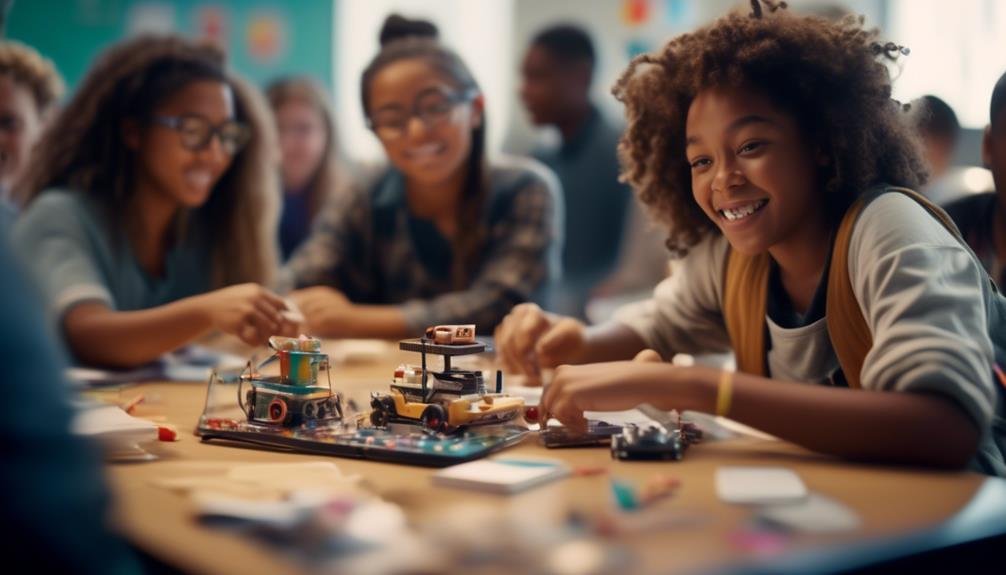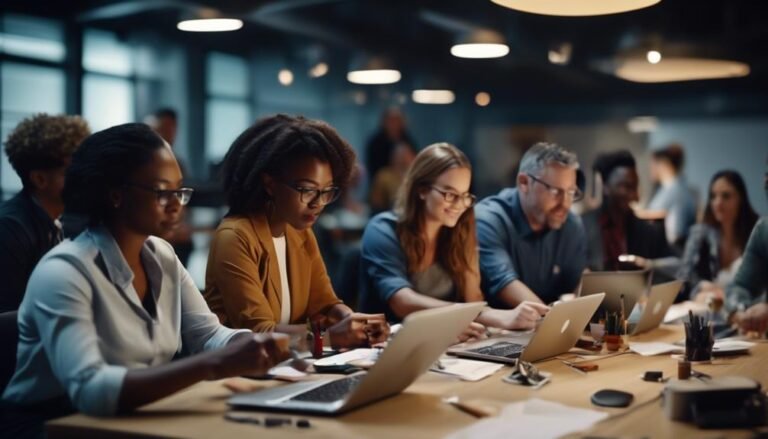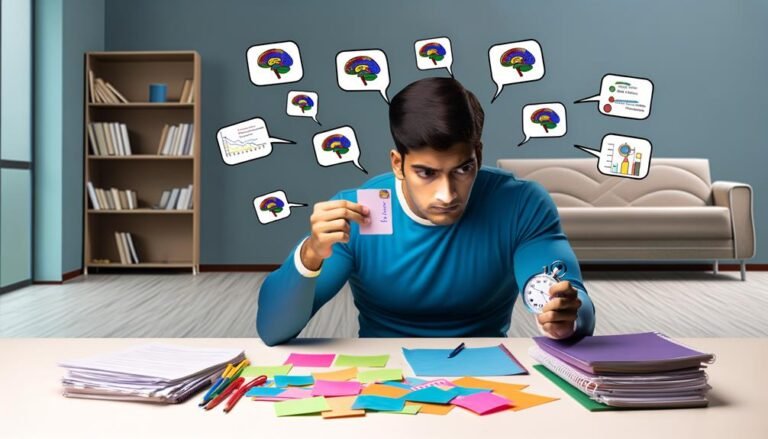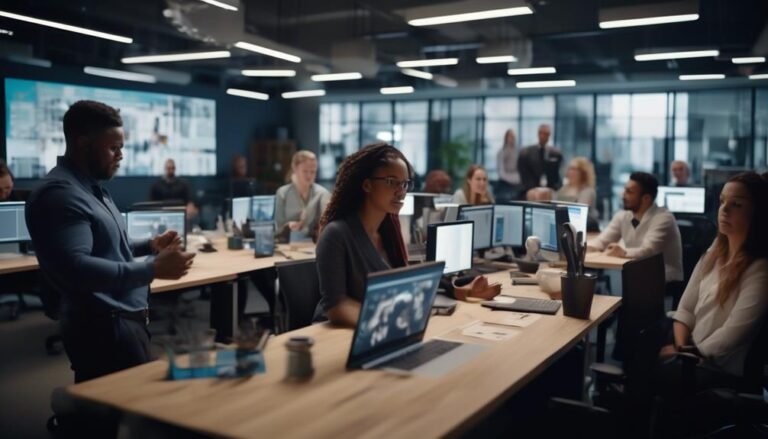Strategies for Engaging and Motivating Learners
Engaging and motivating learners is a constant challenge for educators. With the ever-evolving landscape of education, it becomes essential to explore strategies that go beyond traditional teaching methods. Incorporating technology, utilizing hands-on activities, creating a positive learning environment, providing clear goals and objectives, giving regular feedback and assessment, encouraging collaboration and group work, personalizing learning experiences, and celebrating achievements and progress are just some of the strategies that can make a significant impact on learner engagement.
These strategies not only enhance the learning experience but also foster a sense of ownership and excitement among learners. But what are the most effective ways to implement these strategies? How can educators strike a balance between structure and freedom, ensuring learners are both engaged and motivated?
In this discussion, we will explore these questions and delve into practical techniques that can captivate learners' attention and inspire them to reach their full potential.
Key Takeaways
- Incorporating technology promotes active learning and problem-solving skills.
- Hands-on activities allow learners to apply knowledge in real-world scenarios.
- Creating a positive learning environment fosters motivation and active participation.
- Providing clear goals and objectives gives learners direction and purpose.
Incorporating Technology
How can technology be effectively incorporated to engage and motivate learners in a professional and research-based manner?
One effective way is through the use of interactive simulations and online resources.
Interactive simulations provide learners with a hands-on experience that promotes active learning and problem-solving skills. These simulations create a virtual environment where learners can explore, experiment, and apply their knowledge in a safe and controlled setting. For example, in science subjects, simulations can allow learners to conduct virtual experiments, observe phenomena, and analyze data. This not only enhances their understanding but also increases their motivation and engagement.
Online resources, such as videos, articles, and interactive websites, can also be used to engage and motivate learners. These resources provide learners with access to a wealth of information and enable them to learn at their own pace and in their preferred style. For instance, learners can watch educational videos that explain complex concepts in a visually appealing and engaging manner. They can also access online articles and websites that provide additional information, practice exercises, and interactive quizzes.
Incorporating technology through interactive simulations and online resources can significantly enhance learner engagement and motivation. By providing learners with interactive and immersive learning experiences, technology can make learning more enjoyable and meaningful. Additionally, the accessibility and flexibility of online resources enable learners to take control of their learning journey and explore topics that interest them, ultimately fostering a sense of autonomy and motivation.
Utilizing Hands-On Activities
Incorporating hands-on activities into the learning process builds upon the engagement and motivation fostered by technology, allowing learners to actively apply their knowledge and skills in real-world scenarios. Hands-on experiments provide learners with the opportunity to manipulate objects, observe phenomena, and gather data, which enhances their understanding of abstract concepts and promotes critical thinking skills. This approach, known as sensory learning, engages multiple senses such as touch, sight, and hearing, which further enhances the learning experience.
Research has shown that hands-on activities not only improve academic performance but also foster a deeper level of understanding and long-term retention of information. When learners actively participate in the learning process, they become more motivated, involved, and invested in their own education. By engaging in hands-on experiments, learners can explore and discover concepts on their own, which leads to a greater sense of achievement and satisfaction.
Hands-on activities also facilitate collaboration and communication among learners. Working in groups on hands-on projects encourages learners to share ideas, solve problems together, and develop important social skills. This collaborative learning environment promotes teamwork and enhances the overall learning experience.
Creating a Positive Learning Environment
Establishing a positive learning environment is crucial for promoting student engagement and academic success. When students feel safe, supported, and motivated in their learning environment, they are more likely to actively participate and excel in their studies.
To create a positive learning environment, educators can employ the following strategies:
- Building rapport: Developing positive relationships with students is essential. Teachers can demonstrate genuine care and interest in their students' well-being, which helps to establish trust and create a sense of belonging.
- Fostering motivation: Encouraging students to set goals, providing meaningful and relevant learning experiences, and offering praise and recognition for their efforts can enhance their motivation to learn. When students feel motivated, they are more likely to actively engage in the learning process and strive for academic success.
- Creating a supportive atmosphere: Offering a supportive and inclusive learning environment where students feel valued and respected promotes a sense of belonging. Teachers can encourage collaboration, open communication, and provide opportunities for student voice and choice to foster a positive and inclusive classroom culture.
Providing Clear Goals and Objectives
Providing clear goals and objectives is crucial in engaging and motivating learners.
Clear learning outcomes enable students to understand what they are expected to achieve, providing a sense of direction and purpose.
Goal-oriented instruction allows educators to align their teaching strategies with the desired outcomes, creating a focused and effective learning experience for students.
Clear Learning Outcomes
Clear learning outcomes are essential for guiding learners towards achieving specific goals and objectives in their educational journey. When students have clear and measurable objectives, they are more likely to be engaged and motivated to learn.
To ensure that learning outcomes are effective, educators should consider the following:
- Alignment: Learning outcomes should align with the overall goals of the course or program.
- Clarity: Learning outcomes should be written in a clear and concise manner, using specific action verbs and measurable criteria.
- Relevance: Learning outcomes should be relevant to the students' needs and interests, making them more motivated to achieve them.
Goal-Oriented Instruction
Effective instruction begins with clearly defined goals and objectives. These goals provide learners with a sense of direction and purpose in their learning journey. Goal-oriented instruction is a crucial component of instructional design. It helps to enhance student motivation and engagement. When learners have a clear understanding of what they are expected to achieve, they are more likely to be motivated to put in the effort required to reach those goals.
Research has shown that setting specific, challenging, and achievable goals can significantly improve student performance and learning outcomes. Additionally, providing learners with regular feedback on their progress towards their goals can further enhance their motivation and drive for success.
Giving Regular Feedback and Assessment
Regular feedback and assessment play a crucial role in fostering learner engagement and motivation throughout the learning process. Providing learners with continuous improvement opportunities and timely communication helps to enhance their understanding, progress, and overall satisfaction.
Here are three key reasons why regular feedback and assessment are essential:
- Guidance and direction: Feedback provides learners with guidance on their performance, highlighting areas of improvement and offering suggestions for further development. This helps learners stay on track, understand their strengths and weaknesses, and make necessary adjustments to their learning strategies.
- Recognition and motivation: Regular feedback and assessment allow learners to see their progress and accomplishments, which boosts their motivation and confidence. Recognition of their efforts and achievements encourages them to continue putting in the effort and striving for excellence.
- Sense of accountability: Feedback and assessment hold learners accountable for their learning. By regularly assessing their performance, learners are more likely to take responsibility for their own progress and take proactive steps towards achieving their goals.
In addition to these benefits, timely communication of feedback and assessment results ensures that learners receive the information they need in a timely manner. This enables them to make informed decisions, adjust their learning strategies, and stay motivated throughout their learning journey. Ultimately, regular feedback and assessment contribute to creating a supportive and effective learning environment that promotes learner engagement and motivation.
Encouraging Collaboration and Group Work
What strategies can be implemented to promote effective collaboration and group work among learners?
Promoting communication and fostering teamwork are key strategies for encouraging collaboration and group work among learners.
One effective strategy is to create a positive and inclusive learning environment where learners feel safe and supported to express their ideas and opinions. This can be achieved by setting clear expectations for respectful communication and active listening. Encouraging learners to work in diverse groups can also enhance collaboration by promoting cross-cultural understanding and empathy.
Another strategy is to provide structured activities and tasks that require collaboration and group work. For example, assigning group projects or problem-solving tasks that require learners to work together and utilize their collective skills and knowledge. This not only promotes collaboration but also enhances learners' critical thinking and problem-solving abilities.
In addition, incorporating technology tools such as online discussion boards or collaborative platforms can facilitate communication and collaboration among learners, especially in remote or online learning environments.
Furthermore, providing opportunities for reflection and debriefing after group work can enhance the learning experience. Learners can reflect on their collaboration process, identify areas of improvement, and share their insights with the larger group.
Personalizing Learning Experiences
To enhance learner engagement and achievement, personalizing learning experiences is a key strategy that allows for individualized instruction based on learners' needs, interests, and abilities. By tailoring instruction to meet the unique requirements of each learner, educators can foster a more effective and meaningful learning environment.
Personalized learning experiences involve providing learners with choices and opportunities to explore topics of interest, while also addressing their specific learning goals and challenges.
Here are three key ways to personalize learning experiences:
- Individualized instruction: This approach involves adapting teaching methods, materials, and assessments to meet the specific needs of each learner. By providing targeted support and scaffolding, educators can help students progress at their own pace and in their own way.
- Differentiated learning: This concept acknowledges that learners have diverse learning styles, preferences, and abilities. Differentiated instruction involves tailoring activities and tasks to accommodate these differences, ensuring that all students are appropriately challenged and engaged.
- Personalized goal setting: By involving learners in the goal-setting process, educators can empower them to take ownership of their learning. Setting personalized goals allows students to work towards specific targets that are meaningful and relevant to their individual aspirations.
Celebrating Achievements and Progress
Recognizing and acknowledging the achievements and progress of learners is vital for fostering a positive and motivating learning environment. Research has consistently shown that recognition and rewarding play a significant role in enhancing learner engagement and motivation.
Recognition can take various forms, such as verbal praise, certificates, or public acknowledgment. When learners receive recognition for their achievements, it boosts their self-confidence and reinforces their belief in their abilities. This, in turn, motivates them to continue putting effort into their learning.
Rewarding learners for their progress can also be an effective strategy. Rewards can be both intrinsic, such as a sense of accomplishment, and extrinsic, such as small incentives or privileges. However, it is essential to strike a balance between intrinsic and extrinsic rewards to ensure that learners focus on the joy of learning rather than solely on the external rewards.
Incorporating celebrations and milestones into the learning process also helps to create a sense of excitement and progress. For example, hosting a small ceremony to acknowledge learners' achievements or organizing periodic progress check-ins can foster a positive learning community and boost motivation.
Conclusion
In conclusion, incorporating technology is an effective strategy for engaging and motivating learners. Utilizing hands-on activities is another approach that can enhance student engagement. Creating a positive learning environment is important for fostering a sense of ownership in learning. Providing clear goals and objectives helps students stay focused and motivated. Giving regular feedback and assessment allows students to track their progress and make necessary adjustments. Encouraging collaboration and group work promotes active learning and engagement. Personalizing learning experiences helps meet students' individual needs and interests. Finally, celebrating achievements and progress boosts student motivation and confidence. By implementing these strategies, educators can enhance student engagement, foster a sense of ownership in learning, and ultimately contribute to improved academic performance. The power of these strategies in igniting student enthusiasm and driving learning cannot be overstated.







